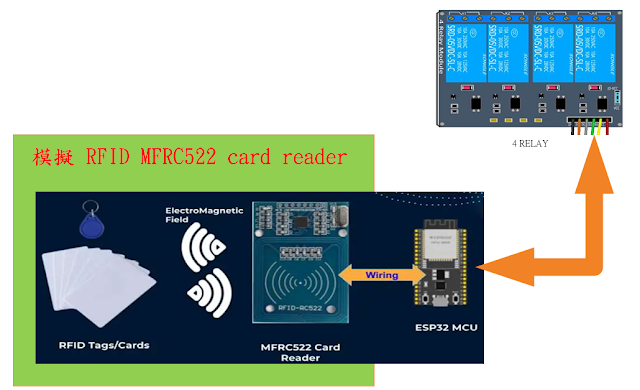Verilog ----基礎4
【例7.1】調用門元件實現的4 選 1
MUX
module mux4_1a (out,in1,in2,in3,in4,cntrl1,cntrl2);
output out;
input in1,in2,in3,in4,cntrl1,cntrl2;
wire
notcntrl1,notcntrl2,w,x,y,z;
not (notcntrl1,cntrl2), (notcntrl2,cntrl2);
and (w,in1,notcntrl1,notcntrl2),
(x,in2,notcntrl1,cntrl2),
(y,in3,cntrl1,notcntrl2),
(z,in4,cntrl1,cntrl2);
or
(out,w,x,y,z);
endmodule
【例7.2 】用case 語句描述的4 選 1 MUX
module
mux4_1b(out,in1,in2,in3,in4,cntrl1,cntrl2);
output out;
input in1,in2,in3,in4,cntrl1,cntrl2;
reg out;
always@(in1 or in2 or in3 or in4 or cntrl1 or
cntrl2)
case ({cntrl1,cntrl2})
2'b00:out=in1;
2'b01:out=in2;
2'b10:out=in3;
2'b11:out=in4;
default:out=2'bx;
endcase
endmodule
【例7.3 】行為描述方式實現的4 位元計數器
module count4(clk,clr,out);
input clk,clr;
output [3:0] out;
reg [3:0] out;
always @(posedge clk or posedge clr)
begin
if (clr) out<=0;
else out<=out+1;
end
endmodule
【例7.4 】資料流程方式描述的4 選 1
MUX
module mux4_1c (out,in1,in2,in3,in4,cntrl1,cntrl2);
output out;
input in1,in2,in3,in4,cntrl1,cntrl2;
assign out=(in1 & ~cntrl1 &
~cntrl2)|(in2 & ~cntrl1 & cntrl2)|
(in3 & cntrl1 &
~cntrl2)|(in4 & cntrl1 & cntrl2);
endmodule
【例7.5 】用條件運算符描述的4 選 1
MUX
module
mux4_1d(out,in1,in2,in3,in4,cntrl1,cntrl2);
output out;
input in1,in2,in3,in4,cntrl1,cntrl2;
assign out=cntrl1 ? (cntrl2 ? in4:in3):(cntrl2 ? in2:in1);
endmodule
【例7.6 】門級結構描述的2 選 1MUX
module mux2_1a (out,a,b,sel);
output out;
input a,b,sel;
not
(sel_,sel);
and
(a1,a,sel_),
(a2,b,sel);
or
(out,a1,a2);
endmodule
【例7.7 】行為描述的2 選 1MUX
module mux2_1b (out,a,b,sel);
output out;
input a,b,sel;
reg out;
always @(a or b or sel)
begin
if (sel) out = b;
else out = a;
end
endmodule
【例7.8】資料流程描述的2 選 1MUX
module MUX2_1c (out,a,b,sel);
output out;
input a,b,sel;
assign out = sel ? b : a;
endmodule
【例7.9 】調用門元件實現的1 位半加器
module half_add1
(a,b,sum,cout);
input a,b;
output sum,cout;
and (cout,a,b);
xor (sum,a,b);
endmodule
【例7.10】資料流程方式描述的1 位元元半加器
module
half_add2(a,b,sum,cout);
input a,b;
output sum,cout;
assign sum=a^b;
assign
cout=a&b;
endmodule
【例7.11】採用行為描述的1 位半加器
module half_add3
(a,b,sum,cout);
input a,b;
output sum,cout;
reg sum,cout;
always @(a or b)
begin
case ({a,b}) //真值表描述
2'b00: begin sum=0; cout=0; end
2'b01: begin sum=1; cout=0; end
2'b10: begin sum=1; cout=0; end
2'b11: begin sum=0; cout=1; end
endcase
end
endmodule
【例7.12】採用行為描述的1 位半加器
module half_add4
(a,b,sum,cout);
input a,b;
output sum,cout;
reg sum,cout;
always @(a or b)
begin
sum= a^b;
cout=a&b;
end
endmodule
【例7.13】調用門元件實現的1 位全加器
module full_add1(a,b,cin,sum,cout);
input a,b,cin;
output sum,cout;
wire s1,m1,m2,m3;
and
(m1,a,b),
(m2,b,cin),
(m3,a,cin);
xor
(s1,a,b),
(sum,s1,cin);
or
(cout,m1,m2,m3);
endmodule
【例7.14】資料流程描述的1 位元全加器
module full_add2(a,b,cin,sum,cout);
input a,b,cin;
output sum,cout;
assign sum = a ^ b ^ cin;
assign cout = (a & b)|(b & cin)|(cin
& a);
endmodule
【例7.15】1 位全加器
module full_add3(a,b,cin,sum,cout);
input a,b,cin;
output sum,cout;
assign {cout,sum}=a+b+cin;
endmodule
【例7.16】行為描述的1 位全加器
module
full_add4(a,b,cin,sum,cout);
input a,b,cin;
output sum,cout;
reg sum,cout; //在always 塊中被賦值的變數應定義為reg 型
reg m1,m2,m3;
always @(a or b or
cin)
begin
sum = (a ^ b) ^ cin;
m1 = a & b;
m2 = b & cin;
m3 = a & cin;
cout = (m1|m2)|m3;
end
endmodule
【例7.17】混合描述的1 位全加器
module full_add5(a,b,cin,sum,cout);
input a,b,cin;
output sum,cout;
reg cout,m1,m2,m3; //在always 塊中被賦值的變數應定義為reg 型
wire s1;
xor x1(s1,a,b); //調用門元件
always @(a or b or cin) //always 塊語句
begin
m1 = a & b;
m2 = b & cin;
m3 = a & cin;
cout = (m1| m2) | m3;
end
assign sum = s1 ^ cin; //assign持續賦值語句
endmodule
【例7.18】結構描述的4 位元級連全加器
`include "full_add1.v"
module
add4_1(sum,cout,a,b,cin);
output [3:0] sum;
output cout;
input [3:0] a,b;
input cin;
full_add1 f 0(a[0],b[0],cin,sum[0],cin1); //級連描述
full_add1 f 1(a[1],b[1],cin1,sum[1],cin2);
full_add1 f 2(a[2],b[2],cin2,sum[2],cin3);
full_add1 f 3(a[3],b[3],cin3,sum[3],cout);
endmodule
【例7.19】資料流程描述的4 位元全加器
module add4_2(cout,sum,a,b,cin);
output[3:0] sum;
output cout;
input [3:0] a,b;
input cin;
assign {cout,sum}=a+b+cin;
endmodule
【例7.20 】行為描述的4 位全加器
module add4_3(cout,sum,a,b,cin);
output [3:0] sum;
output cout;
input [3:0] a,b;
input cin;
reg [3:0] sum;
reg cout;
always @(a or b or cin)
begin
{cout,sum}=a+b+cin;
end
endmodule


沒有留言:
張貼留言